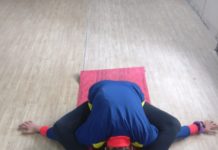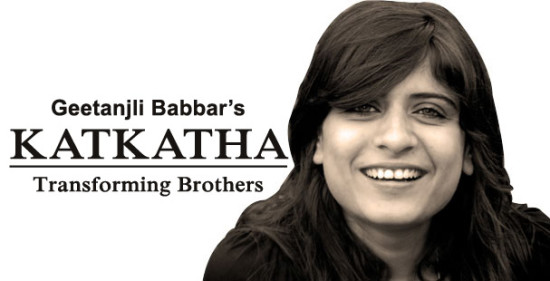Salabha means a locust. The pose resembles that of a locust resting on the ground. It is one of the best yoga poses for beginners as it is a simple backbend that can do a lot to a very sensitive area of the body that is your back. Salabhasana helps to strengthen the vertebral column, legs, and buttocks and stretches the muscles of the shoulders, thighs, and abdomen. This is why it is one of the most commonly recommended yoga postures for beginners. Doing this asana daily can create great healing of the back. Let’s learn how to do this asana.
Steps-by-Step Guide
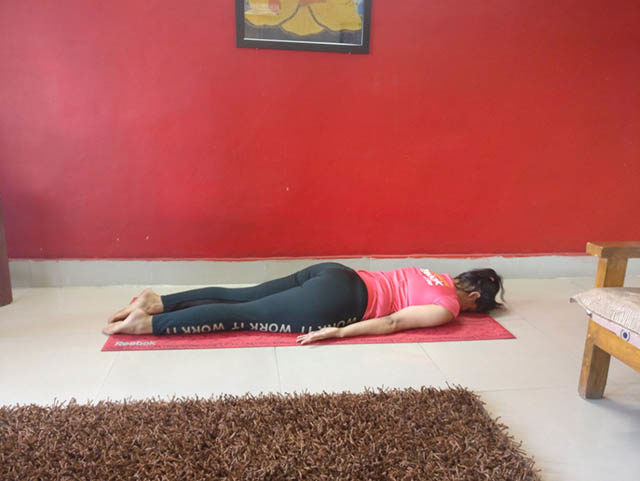
First, lie on your stomach and take few deep breaths. It is advisable to close your eyes and while breathing deep here and give signals to your back muscles to get activated. Now stretch the arms back, inhale deep and lift your head, chest and legs off the floor simultaneously. Now as you breathe deep concentrate on your lower back and hips and raise your legs as high as possible.
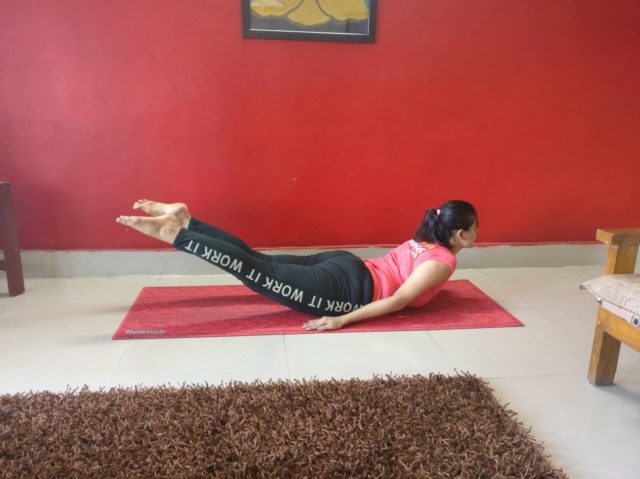
Only your upper abdomen and lower part of chest should be down and bearing the weight. Contract your hips and tighten the thigh muscles. Keep both legs fully extended and straight. Stretch the hands higher by joining the shoulder blades and push your chest further up. Stay in this position for as long as possible and try to breathe normally. As a beginner it would seem difficult to raise the legs high, but always remember to have patience and keep up the practice. As the abdominal muscles start building the lifting of legs and hands becomes easier.
Effects
- Salabhasana relieves gastric troubles and boating
- The pose relieves pain in the sacral and lumber regions as the spine is stretched back and becomes elastic
- It is a great pose for people who have lower back pain and slip disc.
Let’s do a variation of this pose which helps in relieving lower back pain that is very common these days.
Lie on the floor on the stomach, face downwards. Stretch the arms back.
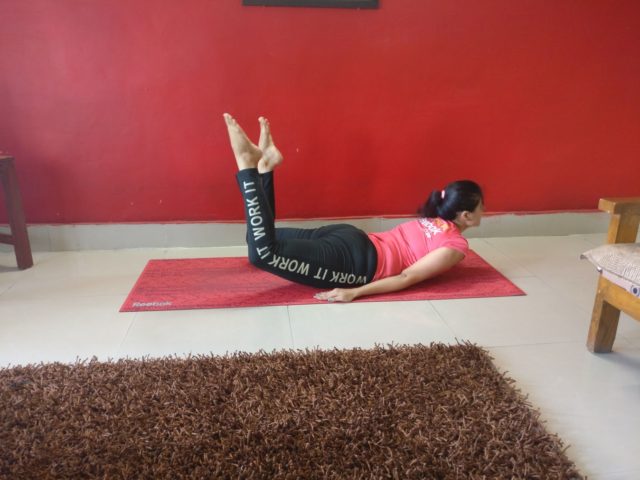 Bend the legs and point your toes up. Remember the legs are parallel to each other in this position. Now keep your breath deep and as you exhale, lift your head, chest and thighs off the floor simultaneously as high as possible. To lift them further up you should put the moolbandha/ the anus lock (squeezing the anus and making your buttocks tight). Unlike the Shalabhasana (basic) here you do not have to lift the hands, instead keep them on the floor close to your thighs. Unlike the Shalabhasana (basic), you do not have to lift the hands, instead keep them on the floor close to your thighs. In case of back pain, do the asana with very long breaths and full awareness. Concentrate on your movements to avoid unwanted jerks.
Bend the legs and point your toes up. Remember the legs are parallel to each other in this position. Now keep your breath deep and as you exhale, lift your head, chest and thighs off the floor simultaneously as high as possible. To lift them further up you should put the moolbandha/ the anus lock (squeezing the anus and making your buttocks tight). Unlike the Shalabhasana (basic) here you do not have to lift the hands, instead keep them on the floor close to your thighs. Unlike the Shalabhasana (basic), you do not have to lift the hands, instead keep them on the floor close to your thighs. In case of back pain, do the asana with very long breaths and full awareness. Concentrate on your movements to avoid unwanted jerks.
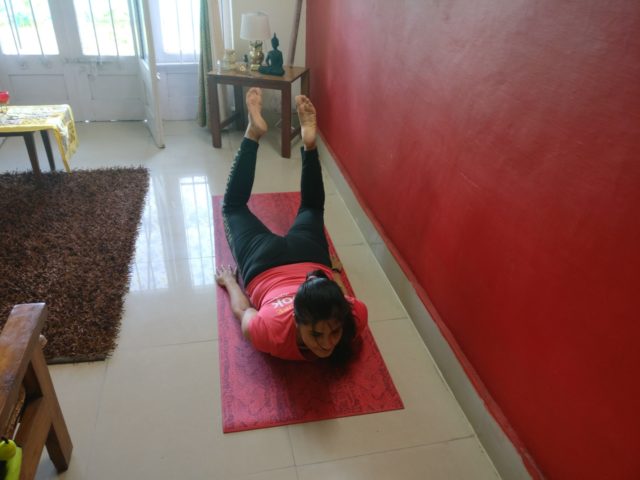
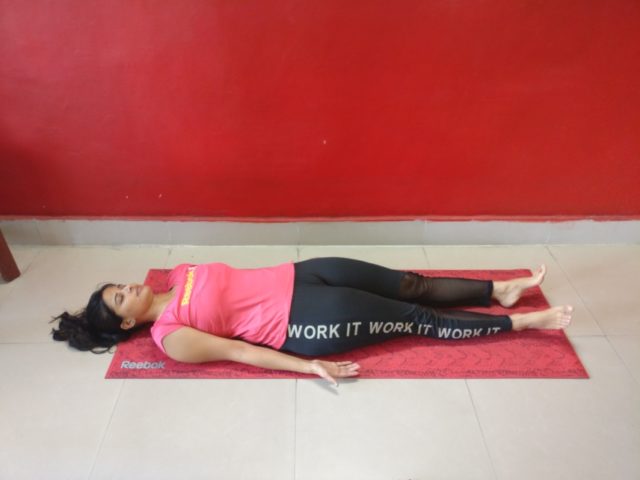
Relax in shavasana after this pose (lying on the back). Keep your eyes closed and breathe deep concentrating on your lower back. This will help in relaxation of muscles present in your back. Since a lot of pressure is developed on the lower back, concentrate on that area more.
Caution:
- Do not do this when the pain is unbearable
- Always consult your doctor in case you have any major spine problem
Preparatory pose for Salabhasana
Upward facing dog
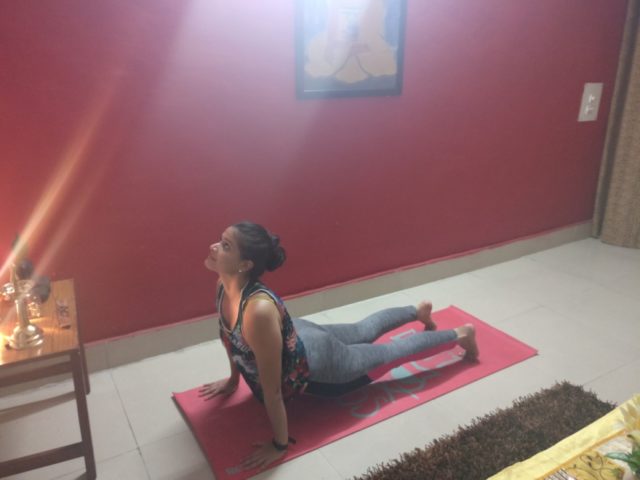
Lie on your stomach and place your hands near your chest by bending the elbows. Keep the feet together or keep the distance between the feet minimal as per the flexibility of your back. Inhale and bring your head up and face your chin towards the ceiling. This is the cobra pose. Now keep your elbows bending or make them straight and lift your knees off the ground. Look up and breathe in the posture in the picture above.























